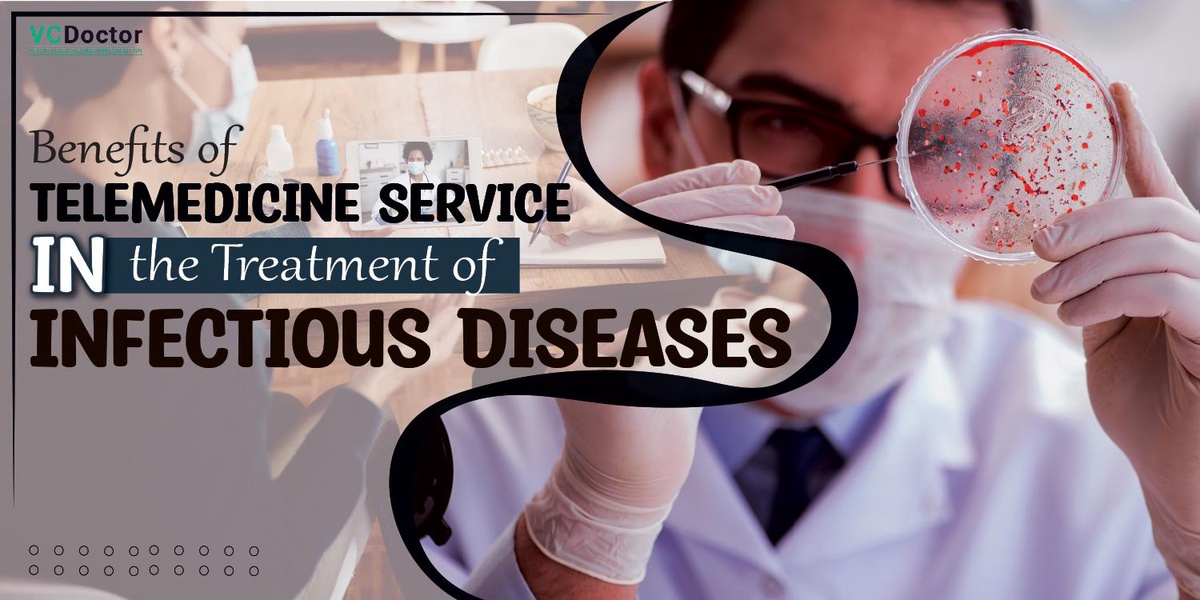Numerous medical diseases have been identified where telemedicine has been used. Telemedicine services can enhance patient care, lower geographic barriers, and improve access to care. Telemedicine’s function in antimicrobial stewardship programs for treating acute and chronic infectious diseases, such as HIV and hepatitis, has been detailed. This blog aims to provide information on synchronous telemedicine programs to manage infectious diseases.
Through telehealth and telemedicine, the ongoing development of technology offers chances to create, enhance, and extend access to healthcare for various groups. Telemedicine service is explained by the World Health Organization (WHO) as
“the delivery of health care services, where distance is a critical factor, by all health care professionals using information and communication technologies for the exchange of valid information for the diagnosis, treatment, and prevention of disease and injuries, research and evaluation, and for the continuing education of healthcare providers, all in the interests of advancing the health of individuals and their families.”
Although “telehealth” and “telemedicine” are sometimes used synonymously, telehealth refers to “a broad breadth of remote healthcare services,” whereas “telemedicine” is primarily the delivery of remote clinical services.
Because telemedicine service is more widely available and accepted by patients and medical professionals in this expanding clinical practice, many advantages have been realized through its utilization. The increasing availability and affordability of equipment, Medicare, and Medicaid reimbursement modifications, and expansion of billing parity regulations are all results of clinical and educational benefits. Further interest in this method of healthcare delivery has been sparked by the potential cost benefits for both patients and healthcare systems.
Intending to increase access to care and clinical results, telemedicine in infectious diseases is a growing clinical practice. Patients with acute infectious diseases and chronic infections, such as HIV and hepatitis C virus (HCV), and those who reside in remote or isolated populations, may not otherwise have access to healthcare without it. Additionally, telehealth may enhance access in situations like pre-exposure prophylaxis (PrEP), which helps prevent HIV.
The Infectious Diseases Society of America (IDSA) is the only infectious illnesses organization with a specific position statement on the use of telehealth and telemedicine, despite the growing practice of telemedicine in infectious diseases.
The expanding number of telemedicine programs used for diagnosing and treating infectious diseases will be examined in this blog.
Let’s see some Outcomes of Telemedicine for infectious disease care.
Antimicrobial Stewardship
Additional chances to address worries about rising antibiotic resistance are provided by telemedicine in antimicrobial stewardship. A 220-bed hospital in southern Brazil created a web-based infrastructure to enable fast post-prescription reviews of clinical data and to give doctors input from distant infectious diseases specialists.
After collecting usage data, the initiative boosted the percentage of prescription-appropriate antibiotics from 51.4% to 81.4%. The weekly virtual meetings for all inpatient clinical cases in this remote stewardship program were facilitated via real-time online conversations. The medical staff had access to a high-definition camera, microphones, real-time file sharing, desktop sharing, and radiographic pictures.
The hospital conducted a “before and after” research to compare the period before the program’s introduction with the period after it by a year. They discovered a trend in the number of nosocomial infections, the cost of antibiotics, and the typical number of prescriptions written for antibiotics each admission.
Acute Infectious Diseases
When there is poor access to health care services and treatment by medical professionals with expertise in infectious diseases, infectious diseases can frequently be poorly handled in rural or isolated areas. The IDSA also encourages telemedicine to give people in need of treatment for infectious diseases prompt access.
To manage Staphylococcus aureus bacteremia (SAB), a study was conducted comparing the effectiveness of telemedicine (three times per week) against on-site infectious disease consultation (standard of care [SOC]). There were 163 patients in the telemedicine service intervention group and 583 in the SOC group in this retrospective cohort analysis of adult patients.
There were no disparities between the groups regarding SAB bundle adherence, 30-day mortality, 30-day SAB-related readmission, persistent bacteremia, or time to culture clearance.
Compared to the rest of Canada, the 32 First Nations communities in the Sioux Lookout region of Ontario, Canada, have a higher incidence and rate of infectious diseases such as tuberculosis, acute rheumatic fever, and skin and soft tissue infections. The Sioux Lookout Meno Ya Win Health Centre, the Sioux Lookout Regional Hospital, and the Division of Infectious Diseases at The Ottawa Hospital in Ontario, Canada, collaborated to create a telemedicine-based consultation program in 2014.
After each patient’s initial video consultation, patient satisfaction surveys for telemedicine delivery were done during the data collection timeframe between July 2014 and July 2015, with an overall patient satisfaction rate of 98%.
Telemedicine programs can link patients in those populations with multidisciplinary infectious diseases specialized teams that can give them the necessary treatment and care to optimize clinical outcomes, which can help with the rising burden of infectious diseases.
View Original Source: https://www.vcdoctor.com/blog/benefits-of-telemedicine-service-in-the-treatment-of-infectious-diseases


No comments yet